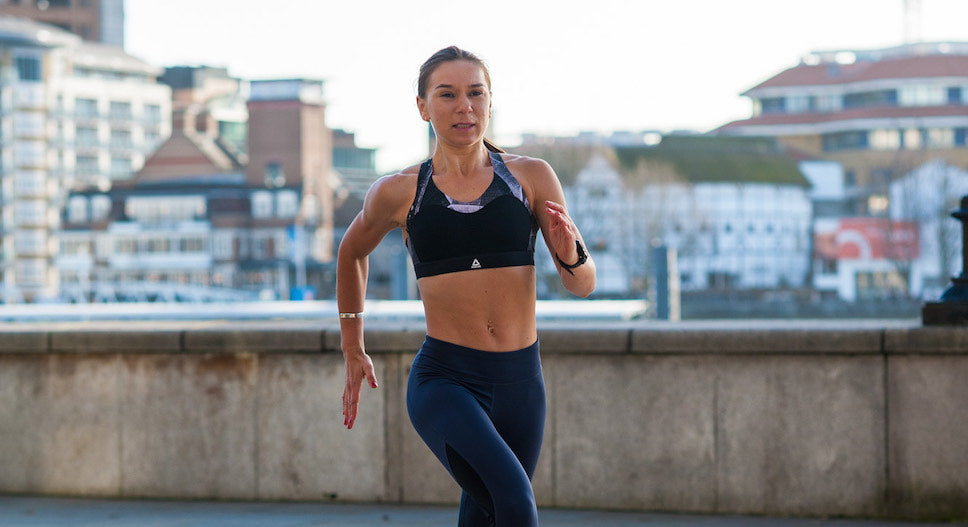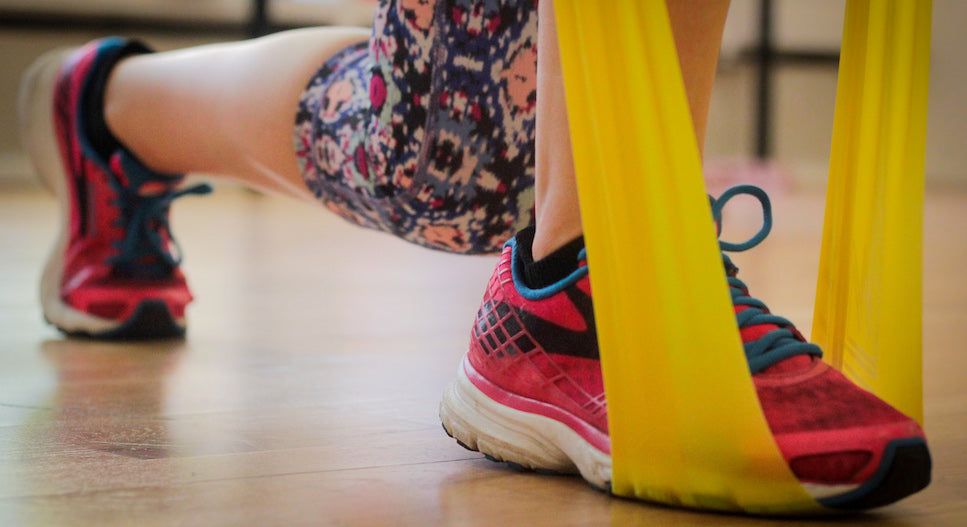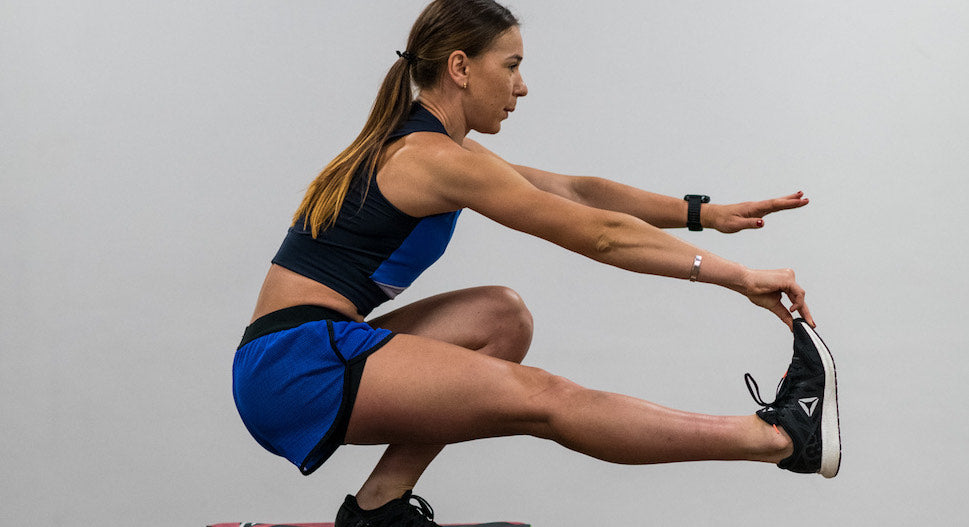
Strength and conditioning are aspects of fitness that runners can all too often neglect – much like stretching. Cross training, and strength training in particular is important for runners who want to stay injury free, have a good experience running and feel great afterward. Personal trainer and amateur runner in her spare time, Olga Stignii is no stranger to this as the majority of her clients for the past 3 years have been runners. She herself has recently reaped the rewards of investing time into cross training, when she finished 10th female at Ultra-trail Capetown (UTCT) 2019 in South Africa, a 100km race up Table Mountain with 4350m D+. She gave us some insight into the best strength and conditioning exercises for runners to practice to improve their performance and overall wellbeing whilst protecting against common injuries such as shin splints and knee pain.
Top Exercises for Runners
Supine Hip Walk-Outs
This is an excellent exercise to build hip stability and a strong posterior muscle chain. During a hip walk-out, lie on your back with your knees bent and your feet on the ground, close to your glutes. Place a resistance band around the thighs, and raise your hips into a glute bridge. Slowly take alternating steps away from your glutes until your legs are completely straight and supported by your heels and your core. Then take small steps back to your glute bridge.
These walk-outs force you to engage the smaller outer glute muscles which results in activation through your entire hips and posterior muscle chain. This is also the holy grail to preventing knee and ankle collapse while running, jumping or squatting. The resistance band adds the activation of the leg as you walk out and back in.

Monster Walks
For this place a resistance band just above your knees, and stand with your feet wider than shoulder-width apart. Next, sit back into a half-squat: roll your shoulders back and down, tuck your hips in. Now your Monster Walk can begin. Take 3 steps in any direction, while maintaining that wide stance and straight back. Monsters might be lopsided, but you don’t want to be! So make sure you take the same amount of steps in each direction leading with each foot similarly. This exercise is ideal for building strong hips knees and ankles.
Tips:
- Core engaged
- Back straight
- Slower is better
Single Leg Deadlifts
Single leg deadlifts are very useful for building strong joints, because of their unilateral motion. Olga recommends using a resistance band or kettle bell for this exercise. This is good exercise for anyone, but especially runners because during their time running they spend all their time on leg. Therefore it's very important to have strong legs and joints to support the activity.
You’ll be balancing on one leg at a time: one foot firmly planted on the ground with the other straightened behind you, lifted slightly off the ground. Flex your back foot and pretend you’re trying to kick the wall behind you with it. Engage your core and hinge at the waist, slowly and with control bend toward your planted foot. When your upper body is parallel to the ground slowly bring yourself back up and repeat.
Tips:
- Upper body straight
- Flexed foot
- Controlled movement

Deadbug
Deadbug is an amazing exercise - for reasons beyond its funny name - in that it’s extremely versatile. When practicing this, you have the flexibility to make it about your core, about cardio, or slow it down and focus on strength, whatever your goal might be.
Lay flat on the ground. It may help to have a yoga mat so that you’re comfortable. It’s important that your spine is completely flat against the mat with no curve in your pelvis. Next, lift your legs off the floor with your knees bent at a 90 degree angle. Extend the opposite arm and opposite leg, then return back to the middle before doing the same on the other side as if you were a bug flipped over.
Tips:
- Add resistance band around legs for challenge
- Try holding 1 or 2 kg weights for further challenge
- Focus on technique rather than making it tougher!
Lateral Oblique Crunches
Before you put that resistance band down, hold onto it for one more killer exercise. Lateral Oblique Crunches not only work your obliques and core, they also work wonders for your quads, hips, and lower back.
Place the band around your knees and lay on your side, putting one arm on the floor and the other with your hand behind your head. Bring your top leg up, bending your knee, and bringing your upper body to meet it. Take your elbow outside your thigh and crunch your oblique, with control bring yourself back to the starting position. For an added challenge keep your leg raised the entire time to keep the tension on the resistance band!

Conclusion
It doesn’t matter if you’re running 5k, 10k, or a marathon, all runners could benefit from cross training and strength and conditioning to stay injury free. Developing a well-rounded approach to fitness will also help make you a stronger runner who can run for further distances. So get out there and start cross training!






























































